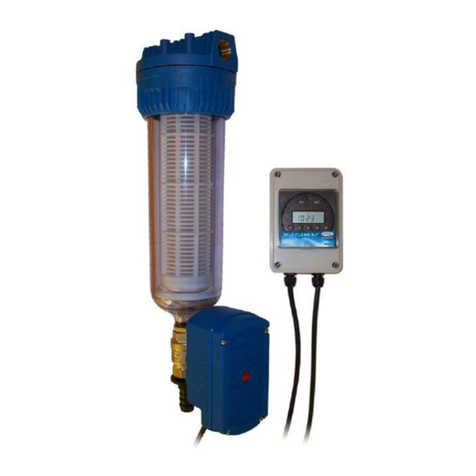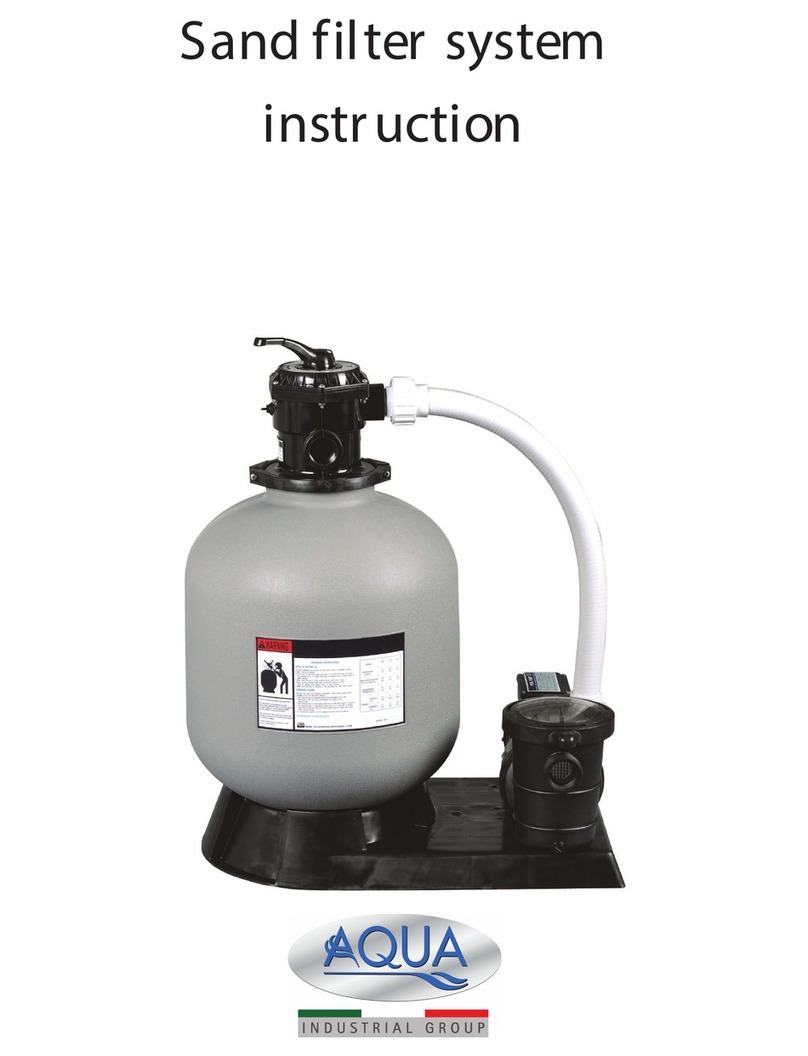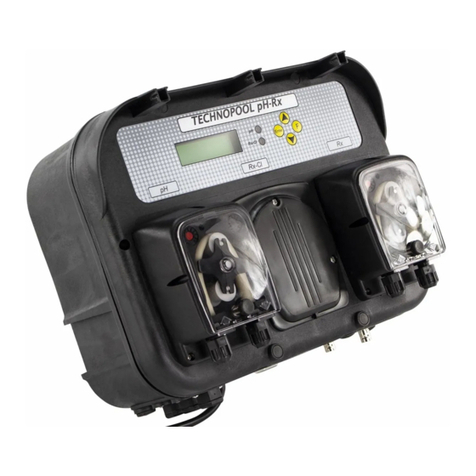
25/02/15 rev4 L0200210 7/32
Environmental conditions and working limits
• Min. environmental temperature: 5°C (41F°)
• Max. environmental temperature: 50°C (131F°)
• Min. water temperature: 5°C (41F°)
• Max. water temperature: 35°C (95F°)
• Max. relative moisture: 95%
5 –PACKAGE CONTENT AND STOCKING INSTRUCTIONS
ARO system consists of a device complete with pre-filters, motor driven pump, osmotic
membrane, carbon active post-filter, 12 l (3,20 USG) storage tank, 2 pressure gauge,
faucet, connection hoses and fittings. The packed device has to be stored in a dry
environment (without condensation or humidity), protected from climatic agents. It has to
be understood that, although correctly packed, the device has to be considered and
handled as fragile material. At the moment of receiving the product, it is necessary to open
the packaging and check the systems integrity. In case of breaks or damage, immediately
advise the transport company and local authorized dealer.
6 –INSTRUCTIONS FOR A REGULAR FUNCTIONING
• Make sure that no hot water can reach inside the device (35°C max) (95F° max)
• Make sure that the device never works with water lower than 5°C (41F°) or in ice
exposed areas.
• Water supply pressure must not exceed 3 bars (43,5PSI) or be less than 0,5
bars (7,25 PSI). With min. flow rate 100 l/h (0,44 usGPM) for pressures higher
than 3 bars (43,5 PSI) or in case of water hammer a pressure regulator is
necessary.
• Never start the device in absence of water. That would irreparably damage the
pump and system.
• In case of continuous duty it’s possible that the electric pump thermal sensor
stops the pump in case of overheating, until it cools again.
• For a perfect preservation, membranes are kept in a bacteria-static liquid, do not
therefore utilize the first water supplied by a new plant or by a plant which
membrane has been freshly substituted, let it flow for about 30 minutes.
• Flow some water in all cases after every pause: it will be of higher quality than
that stored in the osmotic membrane.
• Make sure that the TDS of the water supply is less than 2000 mg/l.
• Pre-filter has to be used for wells, tanks and surface waters.
• Drinkable water must not contain iron.
• Installations, modifications, interventions or repairs must be carried out by
authorized personnel.
• Make sure that power supply voltage is the same of the device’s requirements.
Warranty is void if above mentioned norms are not followed and abided.



































